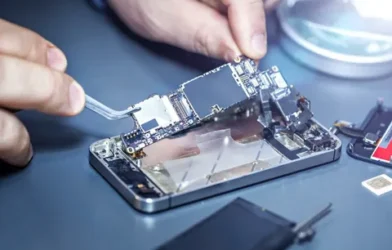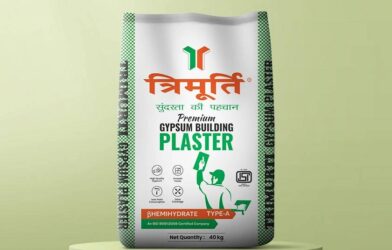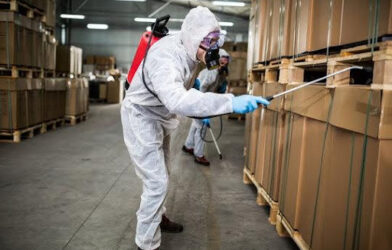Subtotal $0.00
Experiencing unexplained testicle pain can be unsettling and confusing. Testicular discomfort can arise suddenly or develop gradually, and while not all causes are serious, unexplained pain should never be ignored. Understanding how unexplained testicle pain should be addressed can make a difference in finding relief and ensuring overall reproductive health.
This guide explores the possible causes of testicular pain, how to address it, and why hydration is crucial in managing certain conditions.
Understanding Testicle Pain
Testicular pain is discomfort in one or both testicles, which may spread to surrounding areas like the lower abdomen or groin. Pain can be dull, sharp, throbbing, or constant. The pain may have an apparent cause, like an injury, or arise without explanation, potentially indicating underlying health issues.
When unexplained testicle pain persists, it’s essential to assess it with a healthcare provider to identify any underlying causes. Delaying this assessment can increase the risk of complications, especially if the pain results from conditions that require immediate intervention.
Common Causes of Unexplained Testicle Pain
Unexplained testicle pain can stem from various conditions, some of which are more serious than others. Knowing these potential causes can help individuals understand why certain symptoms may arise and when it’s time to seek help.
1. Testicular Torsion
Testicular torsion is a serious condition where the spermatic cord, which provides blood flow to the testicle, twists and cuts off circulation. This condition leads to sudden, severe pain in one testicle and may include swelling, nausea, and abdominal discomfort. Testicular torsion is a medical emergency, as the restricted blood flow can damage the testicle within hours if left untreated.
If you experience intense pain in one testicle along with swelling and nausea, seek immediate medical attention. Surgery is usually required to untwist the spermatic cord and restore blood flow.
2. Epididymitis
Epididymitis, an inflammation of the epididymis (a tube at the back of the testicle that stores sperm), is a common cause of testicular pain, particularly in men under 35. This inflammation often results from bacterial infections, including sexually transmitted infections (STIs) like chlamydia and gonorrhea. Symptoms include pain, swelling, and tenderness in one testicle, often accompanied by fever and pain during urination.
Antibiotics are typically used to treat epididymitis, making early medical intervention essential for relief and preventing complications. If the pain persists after completing antibiotics, follow up with your doctor for further evaluation.
3. Kidney Stones
Kidney stones are hard deposits that form in the kidneys and can cause severe pain when they move through the urinary tract. In men, kidney stones can cause radiating pain that extends to the groin, testicles, and lower abdomen. The pain associated with kidney stones is usually sharp and may occur in waves.
Staying hydrated is crucial in preventing kidney stones. Drinking enough water helps flush out minerals that could form stones, reducing the risk of future pain. Hydration also helps ease pain by promoting smoother passage of smaller stones through the urinary tract.
4. Hernias
Inguinal hernias occur when part of the intestine pushes through the abdominal wall into the groin area. Men with an inguinal hernia may experience a bulge in the groin or pain that extends to the testicles. The discomfort often increases with physical activity, lifting heavy objects, or straining.
Hernias require medical evaluation, and surgery is often recommended to repair the herniated area and relieve pain. Ignoring hernia symptoms can worsen the condition and lead to complications like strangulation, where blood flow to the intestine gets cut off.
5. Varicocele
A varicocele is an enlargement of veins within the scrotum, similar to varicose veins that occur in the legs. Varicoceles can lead to a dull, aching pain in the testicles, often worsening with prolonged standing or physical activity. In some cases, varicoceles may impact sperm production and fertility.
While varicoceles are generally not dangerous, a doctor may recommend surgery if the pain is significant or if fertility is a concern. Regular check-ups help monitor the condition and prevent further discomfort.
6. Testicular Cancer
Testicular cancer, though relatively rare, is a potential cause of unexplained testicle pain and is most common in younger men. Signs of testicular cancer include a lump in the testicle, a change in its size or shape, and a dull ache or pain in the lower abdomen or groin.
Routine self-examinations can help men detect lumps or changes early. If you notice any unusual changes or persistent pain, consult a healthcare provider immediately. Early diagnosis and treatment are essential for successful outcomes.
For more on testicle pain and left abdominal pain, including causes and relief options, refer to this helpful guide.
Why Hydration Is Important for Managing Testicle Pain
Hydration may not directly cure testicle pain, but it plays a significant role in maintaining overall health, particularly in preventing kidney stones and urinary tract infections. Proper hydration helps flush out toxins and supports kidney function, reducing the risk of pain that can radiate to the testicles.
Drinking plenty of water daily also promotes better blood circulation, which is vital for all organs, including the reproductive system. Adequate hydration reduces the risk of dehydration-related complications and supports the body’s natural healing processes.
How Should Unexplained Testicle Pain Be Addressed?
Addressing unexplained testicle pain requires a proactive approach to ensure timely relief and prevent complications. Here are the steps to follow if you experience this type of pain:
1. Perform a Self-Examination
Conducting a self-examination allows you to check for lumps, swelling, or other irregularities in the testicles. A monthly self-exam is a good habit, as it helps men become familiar with their bodies and quickly notice changes.
To perform a self-exam, gently roll each testicle between your thumb and fingers, feeling for lumps or any changes in size, shape, or consistency. If you notice anything unusual, schedule a doctor’s appointment for a professional evaluation.
2. Rest and Avoid Strain
If testicular pain results from minor trauma or strain, resting and avoiding physical exertion can alleviate discomfort. Activities that increase pressure in the groin, like heavy lifting or intense exercise, may worsen pain and should be minimized until the discomfort subsides.
Resting, combined with supportive underwear, may provide relief by reducing pressure on the testicles.
3. Apply Cold Compresses
Cold compresses can help reduce swelling and numb the pain temporarily. Wrap an ice pack in a cloth and apply it to the area for 15–20 minutes. Avoid applying ice directly to the skin, as it can cause frostbite. Repeat as needed, but give the skin a break between applications.
4. Monitor Symptoms
Tracking your symptoms allows you to assess whether the pain is improving or worsening. Note any changes in intensity, duration, or additional symptoms like fever, swelling, or abdominal pain. Persistent or worsening pain often signals that medical evaluation is necessary.
5. Consult a Healthcare Provider
When it comes to unexplained testicle pain, early consultation with a healthcare provider is the safest approach. A doctor will conduct a physical examination and may order imaging tests like an ultrasound to identify potential causes. They might also suggest urine tests to check for infections or other abnormalities.
Prompt medical attention is crucial if the pain is intense, sudden, or accompanied by other symptoms like fever, nausea, or swelling.
Preventive Tips for Testicular Health
Taking proactive steps can help prevent unexplained testicle pain and support overall reproductive health:
- Stay Hydrated: Drink plenty of water to support kidney function and reduce the risk of dehydration-related pain, kidney stones, and urinary infections.
- Practice Safe Sex: Using protection during sexual activity helps prevent STIs, which can lead to epididymitis and other painful conditions.
- Maintain a Healthy Lifestyle: Regular exercise, a balanced diet, and weight management promote good circulation and reduce the risk of conditions like varicoceles and hernias.
- Perform Monthly Self-Exams: Regular self-exams enable early detection of lumps or abnormalities, allowing for prompt treatment if needed.
- Avoid Tobacco and Excessive Alcohol: Smoking and excessive drinking harm circulation, which can contribute to reproductive issues.
When to Seek Immediate Medical Help
Certain symptoms indicate that immediate medical attention is necessary:
- Severe, Sudden Pain: Intense pain, especially if it comes on suddenly, can signal testicular torsion or kidney stones.
- Swelling or Discoloration: Swelling, redness, or changes in the appearance of the testicles require prompt evaluation.
- Pain with Fever or Nausea: These symptoms may indicate infection or inflammation that needs medical treatment.
- Blood in Urine: Blood in urine can be a sign of infection, kidney stones, or other issues affecting the urinary tract.
Conclusion
Unexplained testicle pain should not be ignored, as it can signal conditions ranging from infections to testicular torsion. By addressing this pain proactively—through self-exams, rest, and prompt medical consultation—individuals can protect their reproductive health and avoid complications. Hydration also plays a vital role, supporting kidney function and reducing risks that could contribute to pain.
If you experience persistent or severe testicle pain, consulting a healthcare provider is essential. Early action provides peace of mind, ensures proper care, and supports a healthy future.













